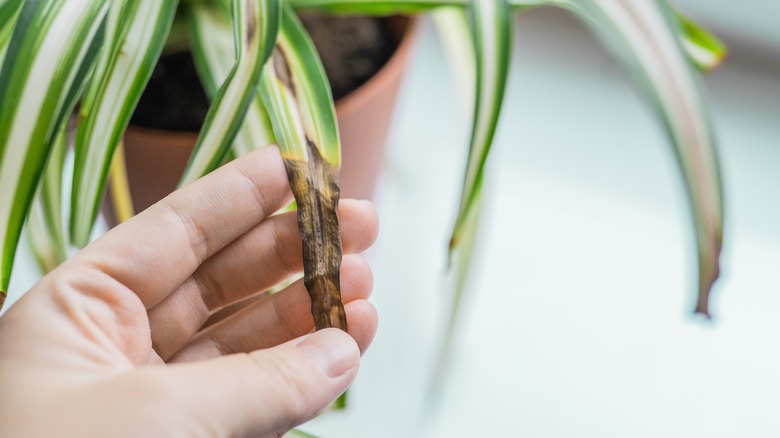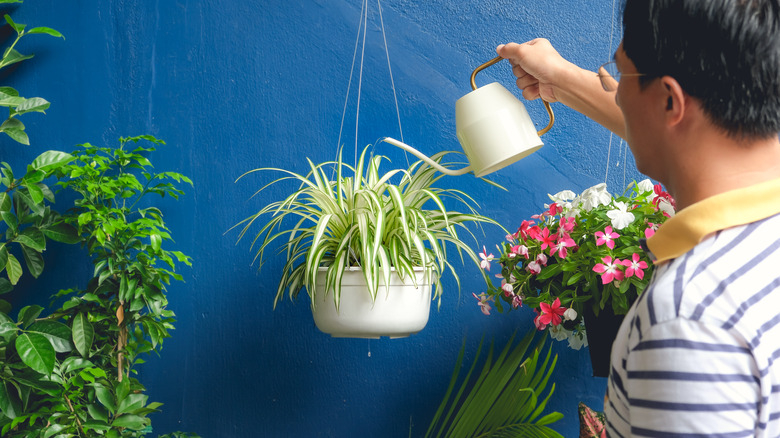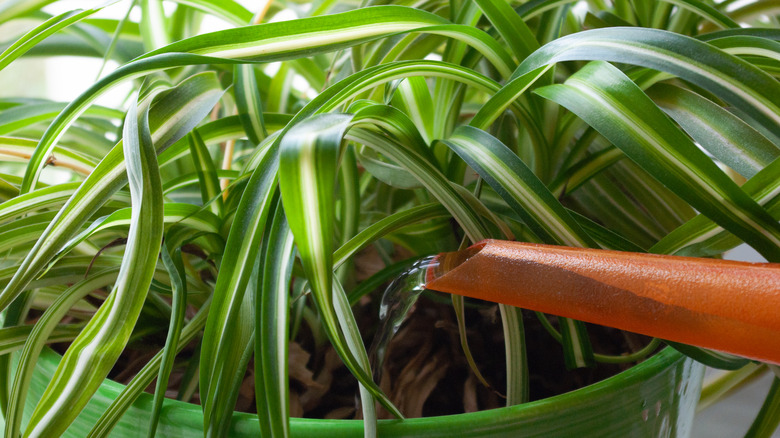What It Means When The Leaves On Your Spider Plant Are Turning Brown (And How To Fix It)
Spider plants (Chlorophytum comosum) have a well-deserved reputation for being low-maintenance houseplants that can thrive without any special care. While this is generally true, it's not uncommon for these beauties to suffer from brown leaf tips. Browning leaves can happen for a variety of reasons, but the most common culprits are over-fertilizing, water impurities, underwatering, and low humidity. Luckily spider plants tend to bounce back well with the proper care.
Native to South Africa, spider plants generally flourish as houseplants as they can thrive with only medium light and grow well in temperatures between 70 and 90 degrees Fahrenheit — conditions that are easily found in many homes. Easygoing spider plants make great gifts as they can be easily propagated from the small plantlets that grow off of larger parent plants. They are also non-toxic for pets, making them a great choice if you have any furry friends at home.
Excessive fertilizer and water impurities can cause brown leaves on spider plants
Spider plants generally benefit from fertilizer, but excessive amounts can easily lead to brown leaf tips. Remember to fertilize your spider plants only every 3 months if you are using a full-strength fertilizer. A good sign that fertilizer is the issue is if you see a crust on the surface of the plant's soil. If you suspect you have overfertilized your plant, you can use water to help leach the excess fertilizer from the soil. Put your plant in a sink or tub and water it until water runs freely from the drainage holes in the bottom of the pot. This should help to flush out the excess fertilizer.
Much like the salts in fertilizers can cause leaf browning, so can impurities in the water you give your plant. If you generally water your plant with tap water, leaf browning could be due to chlorine or fluoride in the tap water. Softened water can also cause browning due to its high salt content. Use distilled water or rainwater if you believe your tap water is causing leaf browning.
Low humidity and inconsistent watering can cause browning leaves
While impurities in the water could be the source of leaf browning, that's not the only way water issues can cause leaf damage. It's also possible that underwatering or inconsistent watering is the problem. While you should allow the soil to dry slightly between watering to prevent root rot on your spider plant, allowing the plant to dry out completely is a recipe for crispy brown leaves. Spider plants generally need slightly more water during the spring and summer months and can be watered less during the winter, when they grow less.
A lack of moisture in the air can also result in spider plants with browning leaves. While spider plants do not require the extremely high humidity some tropical houseplants need, they can still struggle when the air is too dry. If you think a lack of humidity is hurting your plant, consider either misting your spider plant regularly or relocating it to a bathroom or other area with higher humidity.


